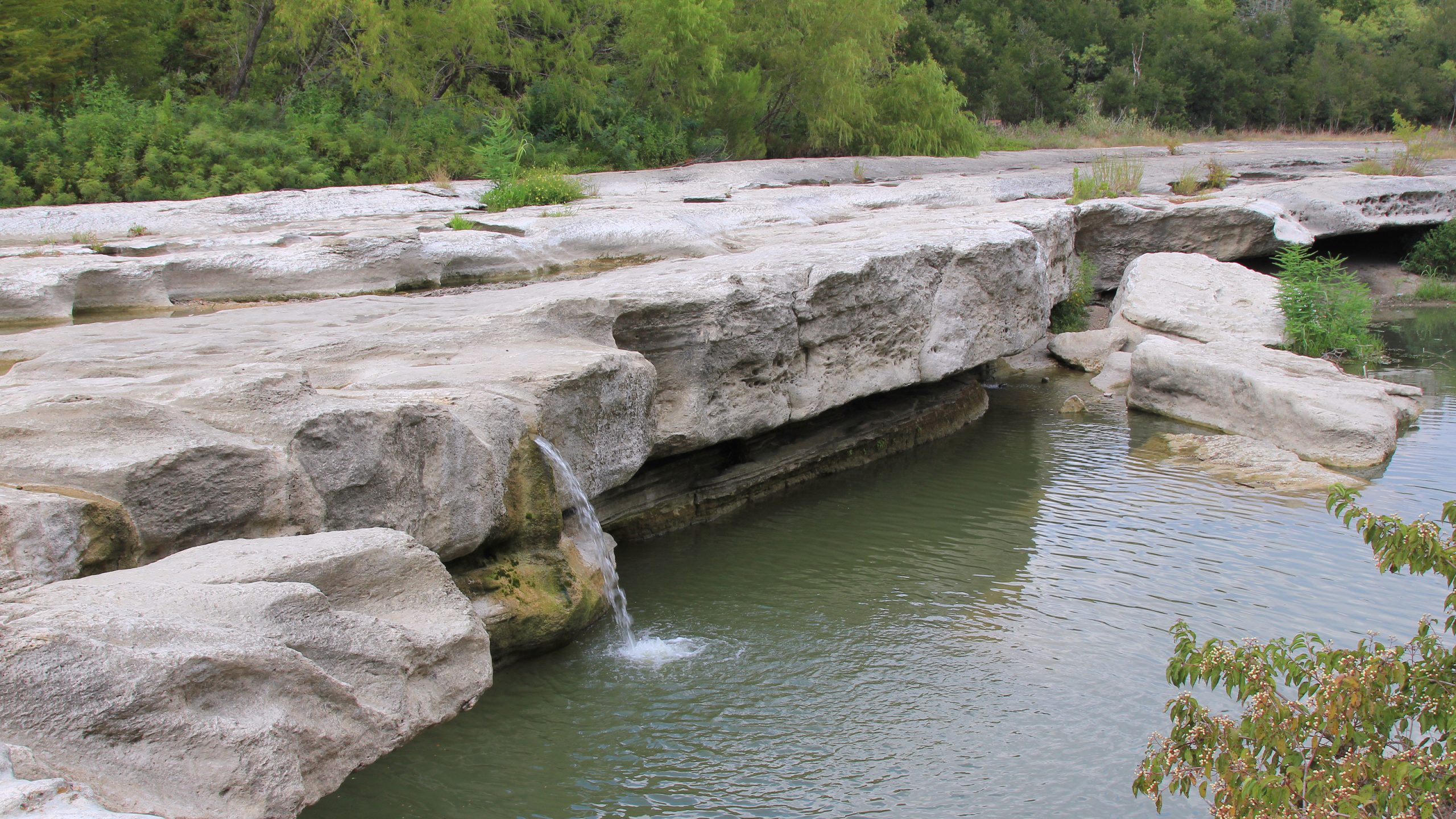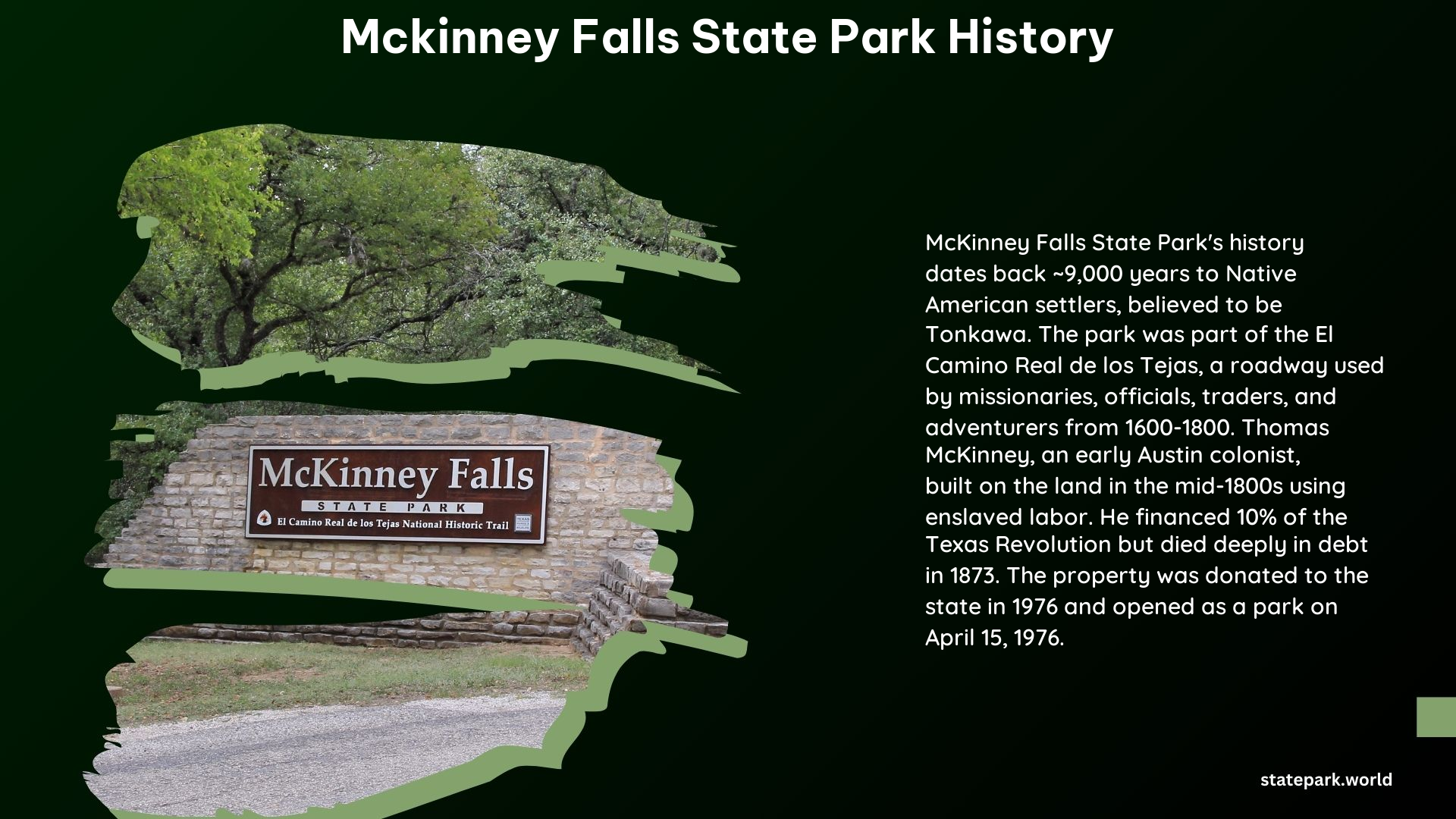McKinney Falls State Park, located in Austin, Texas, boasts a rich history that spans over 9,000 years. From its early settlement by Native American tribes to its role in the Texas Revolution and the development of the El Camino Real de los Tejas, this park has witnessed the evolution of the Lone Star State. Join us as we delve into the captivating story of McKinney Falls State Park.
Early Settlement and Native American Presence

The area that now encompasses McKinney Falls State Park has been home to various Native American tribes for thousands of years. Archaeologists believe that the Tonkawa tribe, a hunter-gatherer group, occupied the land at least 5,000 years ago. Over the centuries, other tribes, including the Lipan Apache and the Comanche, also made their mark on the region.
Thomas F. McKinney and the Texas Revolution

In the early 1820s, Thomas F. McKinney, a businessman and rancher, arrived in Texas as one of Stephen F. Austin’s first 300 colonists. McKinney played a significant role in the Texas Revolution, financing up to 10% of the cost, which ultimately left him deeply in debt. He later served in the Texas Legislature in the late 1840s and was a staunch Unionist who opposed Texas’s secession during the lead up to the Civil War.
El Camino Real de los Tejas and the Park’s Development
The property that now makes up McKinney Falls State Park was once part of the El Camino Real de los Tejas, a historic roadway used by missionaries, government officials, traders, and adventurers between Mexico and Texas from the 1600s to the 1800s. In the mid-1800s, McKinney built his home and a flour mill on the property, using the labor of enslaved people. The property changed hands several times until it was donated to the state in 1971 by J.E. “Pete” Smith, the grandson of James W. Smith.
Park Establishment and Features
McKinney Falls State Park officially opened on April 15, 1976, named after the influential Thomas F. McKinney. Today, the park encompasses 641 acres of land, offering a variety of recreational activities, including camping, hiking, mountain biking, road biking, picnicking, fishing, swimming, and wildlife observation. The park is home to a 500-year-old bald cypress tree named Old Baldy and the ruins of McKinney’s homestead, providing visitors with a glimpse into the park’s rich history.
Important Dates and Figures
| Date | Event |
|---|---|
| 1801 | Thomas F. McKinney was born in Kentucky. |
| 1820s | McKinney arrived in Texas as one of Stephen F. Austin’s first 300 colonists. |
| 1850 | McKinney moved to Travis County and began building his home and flour mill on Onion Creek. |
| 1873 | Thomas F. McKinney died due to kidney disease. |
| 1971 | J.E. “Pete” Smith donated 682 acres of the ranch to the State of Texas for a park. |
| 1976 | The park was dedicated and opened to the public. |
Contact Information
- Phone: (512) 243-1643
- Address: 5808 McKinney Falls Parkway, Austin, TX
- Website: tpwd.texas.gov
